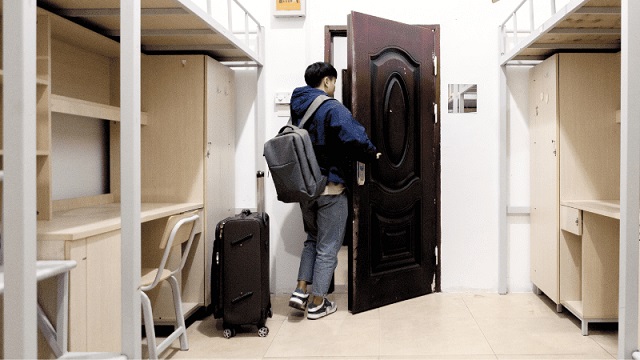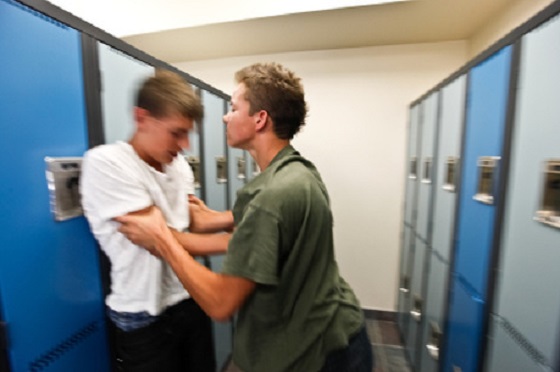Education
Bad student visa policy is no solution for bad student visa policy

From the MacDonald Laurier Institute
By Ken Coates
Making matters worse, a Statistics Canada report released in November of 2023 found that the number of postsecondary students actually enrolled at Canadian Universities was 20% to 30% smaller than the total number of individuals with international student visa’s.
Post-secondary education is in turmoil, thrust into the headlines by the Government of Canada’s decision to cut back on international student visas and work permits. The near panicked response by colleges and universities across the county has attracted attention. The federal decision is poor public policy, with flawed timing, significant negative impacts, and potentially serious long-term implications. But the ‘solutions’ implemented in January 2024 are a classic example of using bad policy to address bad policy. The fallout from this mélange of policy decisions could severely damage Canadian post-secondary institutions and the Canadian economy.
Governments, colleges, and universities have come to rely on international students, now numbering close to 1 million in Canada, particularly their tuition fees and the money that they bring into the country. The tuition fee revenues freed governments from the obligation to provide adequate funding to post-secondary institutions. Colleges and universities, for their part, used international student funding to avoid difficult, painful decisions related to the level of provincial support (the territories are not strongly affected by these processes).
The current controversy reflects more than a decade of poor and ineffective federal policies. Canada opened the gates for immigration, reaching unprecedented levels of refugees, formal immigrants, and hundreds of thousands of international students. Making matters worse, a Statistics Canada report released in November of 2023 found that the number of postsecondary students actually enrolled at Canadian Universities was 20% to 30% smaller than the total number of individuals with international student visa’s. Pointing to significant abuse of the study permit system, the report states, “It is unclear whether [the international ‘students’] stayed in Canada and, if so, what their main activities were.”
Our rapidly rising population is now blamed, not always accurately, for a serious national housing shortage and sky-rocketing prices, particularly in the major cities. The international student debate highlights the shocking shortcomings of the nation’s approach to housing and the absence of a thoughtful plan for population growth and rapid urbanization.
Bad federal policy is more than matched by poor provincial decisions, particularly in Ontario. The Liberal and Progressive Conservative administrations in Ontario have underfunded colleges and universities, dramatically so, relative to the other provinces and territories. Frozen tuition fees only added to institutional fiscal challenges. Several provinces, again led by Ontario, doubled down by authorizing many for-profit private colleges, most operating in league with public universities and colleges, to recruit international students. At the provincial level, the influx of international students, coupled with high tuition fees, masked the deficiencies of provincial funding, leaving underlying financial challenges unaddressed.
Colleges and universities had bad policies of their own. Without the government funding to meet their salary, administrative and capital costs, post-secondary institutions became addicted to international student fees, the crack cocaine of advanced education. Dozens of colleges and universities, enrolled thousands of international students, feeding the bottom line but increasing the reliance on international students and high tuition fees. They assumed, over-optimistically, that the steady flow of international students would never slow, let alone stop. They are now paying the price for that miscalculation.
Some institutions, particularly small institutions in northern and small-town locations, eve established satellite facilities in big cities to capitalize on strong student demand and to supplement small and stagnant enrollments on the home campus. International students and satellite operations were lifelines for institutions that would otherwise be in severe difficulty.
The Government of Canada’s response to the convergence of multiple bad policy streams consists of additional bad policy decisions. International student visas have been slashed by 35% and student-friendly work permit arrangements have been cut back dramatically. Canada’s once wide-open doors for international students have been partially closed. A carefully cultivated reputation for being receptive to foreign students has been degraded, if not dismantled, in one quick federal move.
The federal policy, announced with seemingly little coordination with provincial authorities and institutions, is a plainly political move, an urgent step taken by a Liberal government reeling in the polls. The decision was released in January 2024, at a key stage in the international student cycle. Colleges, public and private, are vulnerable to dramatic shifts in enrollment and they now face catastrophic losses of income. The implications go much further. Residences will want for students and employers of the eager international students will struggle to find replacements. Many college and university faculty and staff, particularly vulnerable short-term and sessional workers, will likely lose their jobs. And the national economy will lose out on a big portion of the billions of dollars spent annually by the international students.
The problem has been years in the making. The government may have been trying to make up for lost time but the hasty federal decision has already had an impact. Colleges and universities are already reporting sharp drops in applications. The message that Canada is no longer friendly for international students is out globally. The damage to student enrollment might be greater than anticipated.
A more appropriate approach would have been to announce a gradual reduction, starting in 2025, giving the colleges and universities time to adjust to a potential fiscal disaster. Another sensible alternative could have been to take aim at the abuse of the student visa system and to ensure those who entered the country under a study permit were actually enrolled in and attending classes. Bad policy often comes from knee-jerk reactions to political processes; good policy takes careful thought and, often, time.
Canada’s large international student recruitment industry brought billions of dollars into the Canadian economy. Thousands of students worked while they studied and made successful transitions to permanent resident status. Many people who came to Canada as high fee-paying students have become Canadian citizens and taxpayers. The students followed the rules, as did the colleges and universities that capitalized on clear and long-standing government policy. The federal and provincial policies may have been poorly designed and inappropriate, but governments set the parameters and expectations and shouldn’t punish others for their shortsightedness.
Bad policy, to be succinct, is no solution for bad policy, but that is what is happening to international student education in Canada.
Ken Coates is a distinguished fellow and director of Indigenous affairs at the Macdonald-Laurier Institute and a professor of Indigenous governance at Yukon University.
Alberta
Alberta poll shows strong resistance to pornographic material in school libraries

From LifeSiteNews
A government survey revealed strong public support, particularly among parents, for restricting or banning sexually explicit books.
Albertans are largely opposed to their children viewing pornography in school libraries, according to government polling.
In a June 20 press release, the Government of Alberta announced that their public engagement survey, launched after the discovery of sexually explicit books in school libraries, found that Albertans strongly support removing or limiting such content.
“Parents, educators and Albertans in general want action to ensure children don’t have access to age-inappropriate materials in school libraries,” Demetrios Nicolaides, Minister of Education and Childcare, said.
“We will use this valuable input to guide the creation of a province-wide standard to ensure the policy reflects the priorities and values of Albertans,” he continued.
READ: Support for traditional family values surges in Alberta
The survey, conducted between May 28 to June 6, received nearly 80,000 responses, revealing a widespread interest in the issue.
While 61 percent of respondents said that they had never previously been concerned about children viewing sexually explicit content in libraries, most were opposed to young children viewing it. 34 percent said children should never be able to access sexually explicit content in school libraries, while 23 percent believed it should be restricted to those aged 15 and up.
Similarly, 44 percent of parents of school-aged children were supportive of government regulations to control content in school libraries. Additionally, 62 percent of respondents either agreed or strongly agreed that “parents and guardians should play a role in reporting or challenging the availability of materials with sexually explicit content in school libraries.”
READ: Alberta Conservatives seeking to ban sexually graphic books from school libraries
The polling results come after the Conservative Alberta government under Premier Danielle Smith announced that they are going ahead with plans to eventually ban books with sexually explicit as well as pornographic material, many of which contain LGBT and even pedophilic content, from all school libraries, on May 27.
At the time, Nicolaides revealed that it was “extremely concerning” to discover that sexually explicit books were available in school libraries.
The books in question, found at multiple school locations, are Gender Queer, a graphic novel by Maia Kobabe; Flamer, a graphic novel by Mike Curato; Blankets, a graphic novel by Craig Thompson; and Fun Home, a graphic novel by Alison Bechdel.
David Clinton
Why Are Ontario’s Public Schools So Violent?


 David Clinton
David Clinton
Ontario’s Auditor General just released a performance audit on the Toronto District School Board. I’m sure it’ll surprise exactly no one that “financial and capital resources are not consistently allocated in the most cost-effective or efficient way” or that “The effective management of operations was not always being measured and assessed for internal decision-making”.
And there was plenty of institutional chaos:
“Between 2017/18 and 2022/23…about 38% of TDSB schools did not report conducting the minimum number of fire drills required by the Ontario Fire Code annually, and about 31% of TDSB schools did not report conducting the minimum number of lockdown drills required by TDSB policy annually. The TDSB does not have an effective process to ensure the required number of drills are performed by each school, each year, or that they are performed in accordance with TDSB policy when performed.”
What else would you expect from a massive government bureaucracy that employs 40,000 people, spends $3.6 billion annually and – based on many of the highlighted items on their website – is laser-focused on pretty much anything besides education?
What you might not have seen coming was that around half of the report centered on in-school violence. To be sure, we’re told that there were only 407 violent events reported to the board during the 2022/2023 school year – which is a rate of around 17 events for every 10,000 students. 17:10,000 doesn’t exactly sound like an environment that’s spiraling out of control.
There was a caveat:
“Due to input errors by principals, the TDSB underreported the number of violent incidents that occurred between 2017/18 to 2021/22 to the Ministry by about 9%.”
Ok. But we’re still nowhere near Mad Max levels of violence. So what’s attracting so much of the auditor’s attention? Perhaps it’s got something to do with a couple of recent surveys whose results don’t quite match the board’s own records. Here’s how the audit describes the first of those:
“The 2022/23 TDSB Student and Parent Census was responded to by over 138,000 students, parents, guardians and caregivers. It showed that 23% of students in Grades 4 to 12 that responded to the survey said they were physically bullied (e.g., grabbed, shoved, punched, kicked, tripped, spat at), and about 71% stated they were verbally bullied (e.g., sworn at, threatened, insulted, teased, put down, called names, made fun of). Further, about 14% of student respondents indicated they had been cyberbullied. TDSB’s central tracking of all bullying incidents is much lower than this, suggesting that they are not centrally capturing a large number of bullying incidents that are occurring.”
“23% of students in Grades 4 to 12 that responded to the survey said they were physically bullied”. That’s not a great fit with that 17:10,000 ratio, even if you add the 9 percent of underreported incidents. And bear in mind that these students and their families were willing to discuss their experiences in a survey run by the school board itself, so it’s not like they’re hard to find.
But that’s not the worst of it. The Elementary Teachers’ Federation of Ontario (ETFO) ran their own survey in 2023. They wanted to hear about their members’ experiences with workplace violence. Here, quoting from the audit report, is what TDSB respondents told them:
- 42% had experienced physical force against themselves in 2022/23;
- 18% had experienced more than 10 of these physical force incidents in 2022/23;
- 81% indicated the number of violent incidents increased since they started working;
- about 77% responded that violence was a growing problem at their school;
- about 29% indicated they had suffered a physical injury;
- 57% had suffered a psychological injury/illness (such as mental stress, psychological or emotional harm) as a result of workplace violence against them; and
- about 85% indicated that violence at their school made teaching and working with students more difficult.
29 percent of teachers suffered a physical injury due to workplace violence. That’s elementary school teachers we’re talking about.
For perspective, even accounting for the 9 percent underreporting, the TDSB was aware of events impacting less than a quarter of a percentage point of their students (and apparently didn’t report any violence against teachers). But by their own accounts, 23 percent of all students and 42 percent of elementary teachers have suffered attacks. Are board officials willfully ignoring this stuff?
And if only there was some way to address violence and other criminal activities on school property. Perhaps – and I’m just spitballing here – there could even be people working in schools whose job it would be to (what’s the word I’m looking for?) police crime.
On a completely unrelated note, back in November, 2017, the Toronto District School Board voted 18-3 to permanently end their School Resource Officer (SRO) program. Since then, police officers have been unwelcome on board property.
To be sure, the TDSB has “accepted” all 18 of the report’s recommendations. But talk is cheap. Who’s to say that commitment won’t play out the same way we’ve seen with their fire drill compliance.
Can you spell “class action lawsuit”?
-

 Daily Caller2 days ago
Daily Caller2 days agoTrump’s One Big Beautiful Bill Resets The Energy Policy Playing Field
-

 Alberta8 hours ago
Alberta8 hours agoCOWBOY UP! Pierre Poilievre Promises to Fight for Oil and Gas, a Stronger Military and the Interests of Western Canada
-

 Alberta1 day ago
Alberta1 day agoAlberta Next: Immigration
-

 Business2 days ago
Business2 days agoThe Digital Services Tax Q&A: “It was going to be complicated and messy”
-

 International2 days ago
International2 days agoElon Musk forms America Party after split with Trump
-

 Carbon Tax2 days ago
Carbon Tax2 days agoCanada’s Carbon Tax Is A Disaster For Our Economy And Oil Industry
-

 Disaster2 days ago
Disaster2 days agoTexas flood kills 43 including children at Christian camp
-

 Alberta9 hours ago
Alberta9 hours agoAlberta and Ontario sign agreements to drive oil and gas pipelines, energy corridors, and repeal investment blocking federal policies



